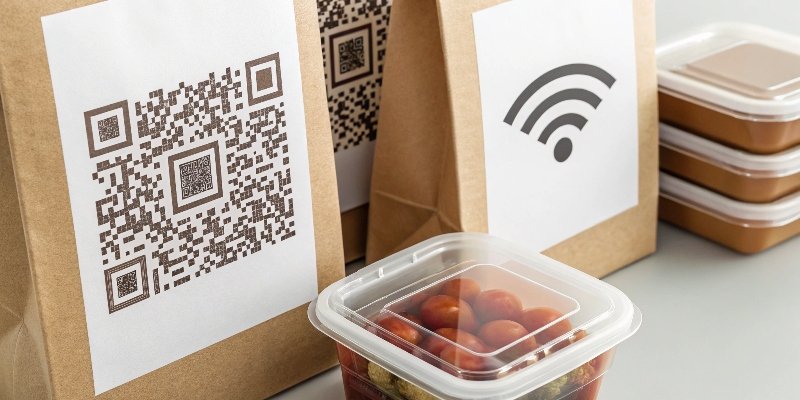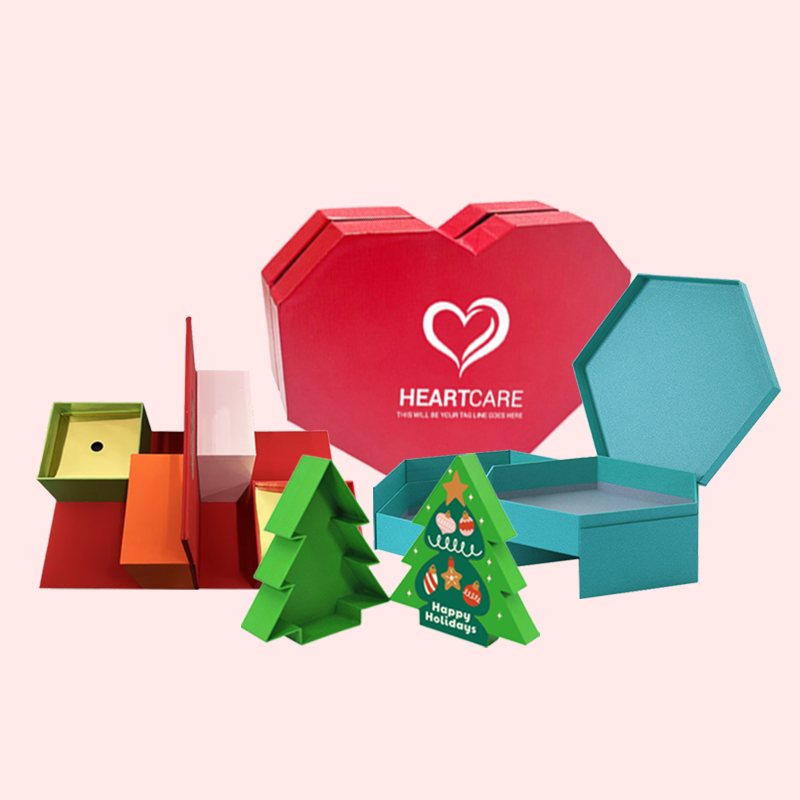You want to give your customers clear information, but old labels are cluttered. This causes confusion and waste. What if your packaging could communicate better and build more trust?
Yes, SmartLabels on food packages are a very smart idea. They use technology like QR codes and NFC to provide dynamic information on nutrition, allergens, supply chain, and real-time freshness. This greatly enhances transparency, reduces food waste, and builds stronger consumer trust in your brand.
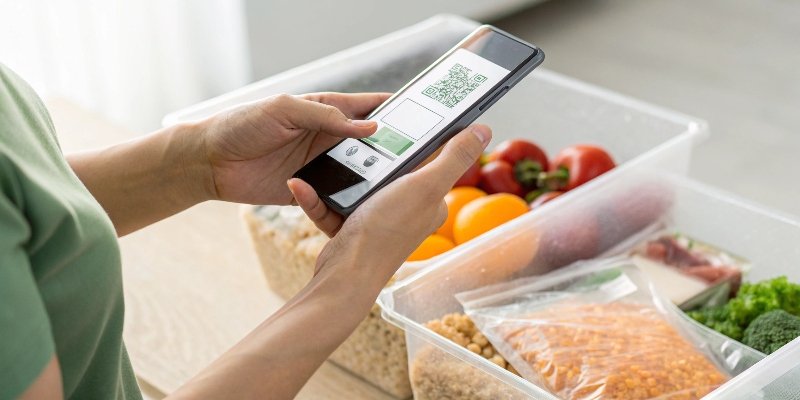
The potential of SmartLabels is huge. They promise a future where our food packaging is more than just a container; it is a source of live, useful information. This technology changes the relationship between a brand and its customers. But with any new technology, questions about reliability, effectiveness, and what they actually are come up. Let's look at these questions one by one to see how they fit into modern package design.
How reliable is a Smart label?
You've designed a great package with a SmartLabel, but what if the technology fails? An unreliable label could mislead customers about important facts like allergens or expiry dates, causing serious problems. Understanding the factors that affect SmartLabel reliability is key to making sure they work every time.
A SmartLabel's reliability depends heavily on the technology used—QR, NFC, or RFID—and how well it's implemented. When designed correctly and supported by a stable database, they are very reliable. The key is to make sure the physical tag1 can survive the supply chain2 and the digital link stays active.
[^3] [SmartLabels](https://gifts-pack.com/is-smart-packaging-the-future-9-essential-insights-you-shouldnt-miss/)[^4] A close-up view of different types of SmartLabels like a QR code and an NFC symbol on packaging](http://gifts-pack.com/wp-content/uploads/2025/08/a-smartlabel-s-reliability-depends-heavily-on-the-.jpg)
In my 16 years in the packaging industry, I've seen that reliability3 is not a simple "yes" or "no" answer. It depends on several parts working together perfectly. For designers like my colleague Peter, getting this right is crucial.
The Physical Tag's Durability
First, we must consider the physical tag1 itself. Can it handle being frozen, heated, or getting wet during transit and storage? A QR code, for example, is just printed ink on a label. If the ink smudges or the label tears, the code becomes unscannable. I remember a project for a frozen food client. We tested many different inks and label materials. We had to find a combination that would not peel or blur when condensation formed on the box. For NFC or RFID, the embedded chip is more durable but must be protected within the packaging layers so it doesn't get crushed.
The Digital Link's Stability
Second, the tag is only a gateway. It points to a website or database where the information is stored. This digital backend must be online 24/7. If the company's server goes down, the SmartLabel becomes a dead end. It is like building a beautiful store but keeping the front door locked. Brands must invest in reliable web hosting and maintenance. This is not just a design feature; it is an infrastructure commitment.
| Technology | Physical Durability | Digital Reliability | User Friendliness |
|---|---|---|---|
| QR Code | Depends on print quality | High (URL-based) | High (most phones have built-in scanners) |
| NFC | High (embedded chip) | High (URL/data-based) | Medium (requires NFC-enabled phone) |
| RFID | High (embedded chip) | High (database-based) | Low (requires special reader, not for all consumers) |
Do food warning labels4 work?
Traditional warning labels about high salt or sugar are often printed on the back and ignored by busy shoppers. This means consumers might miss critical health information, and the label fails to do its job. SmartLabels can make these warnings more noticeable, but does this new format actually work better?
Yes, food warning labels4 work, but their effectiveness can be greatly improved with smart technology. SmartLabels make warnings more powerful by providing deeper context. A simple scan can reveal why an ingredient is a concern, suggest healthier alternatives, or offer portion control advice, making the information more personal and actionable.
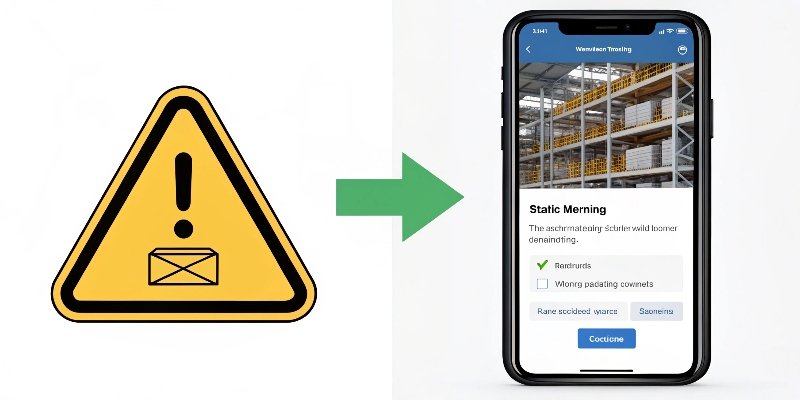
Let's think about how most people see warnings. A small text box that says "High in Sugar" can be easy to overlook. Over time, many of us have become "blind" to these standard warnings. As a packaging design5er, my challenge is to make this crucial information matter to the person holding the box in their hands.
Beyond the Static Text
A SmartLabel can do much more than just repeat a printed warning. I worked with a client on a new fruit juice product. The package had a "High in Sugar" warning, as required by law. When a user scanned the product's QR code, the SmartLabel took them to a simple webpage. This page showed the sugar content measured in teaspoons, a visual that people understand instantly. It also compared the juice's sugar content to a can of soda and an apple. This kind of relatable, visual information is much more powerful than simple text. It helps the consumer make a truly informed choice.
Personalization is Key
The real power of SmartLabels6 is personalization7. They can connect to health apps8 on a user's phone. Imagine a customer with a peanut allergy scanning a product. The SmartLabel could instantly cross-reference the ingredients with the user's allergy profile and show a prominent "Contains Peanuts" alert on their screen. This moves the warning from a general "may contain" statement to a direct, personal alert. This is where packaging becomes a genuine service, looking out for the customer's well-being.
What is smart and intelligent packaging9 of foods?
The terms "smart" and "intelligent" packaging are used a lot in our industry, but what do they really mean? This confusion can make it hard for designers and brands to choose the right technology for their products. Understanding the clear difference helps you make better decisions and explain the benefits to your clients.
Smart packaging helps with communication; it uses features like QR codes10 to link to digital information. Intelligent packaging actively monitors the product's condition, using indicators to show real-time changes in temperature or freshness. Both types aim to add value beyond just protecting the product.
[^12])](http://gifts-pack.com/wp-content/uploads/2025/08/smart-packaging-helps-with-communication-it-uses-.jpg)
I have watched these terms grow and change over my career. To explain it to clients and new designers, I find it helpful to break them down into two different jobs. One is a communicator, and the other is a monitor.
Smart Packaging - The Communicator
This type of packaging is all about connecting the physical product to the digital world. The package "talks" to the consumer through their smartphone. We use technologies like QR codes, NFC, and sometimes Augmented Reality (AR) for this. The SmartLabel can tell a brand's story, provide recipes, or confirm that a product is authentic and not a fake. Its primary function is to be an information bridge. It extends the conversation beyond the physical space on the box. A SmartLabel is the most common feature of smart packaging.
Intelligent Packaging - The Monitor
This type of packaging has a more internal job. It "senses" what is happening to the food inside. It monitors the conditions and the product's state. A great example is a Time-Temperature Indicator11 (TTI). This is a special label that changes color if a frozen product has been exposed to temperatures that are too high for too long. Another example is a freshness indicator that reacts to the gases released by spoiling food. Its job is to monitor a condition and display its status, often with a simple visual cue.
| Feature | Smart Packaging | Intelligent Packaging |
|---|---|---|
| Main Function | External Communication | Internal Monitoring |
| Technology | QR Codes, NFC12, RFID | TTI, Gas Sensors, Biosensors |
| Information | Brand Story, Recipes, Supply Chain | Freshness, Temperature, Spoilage |
| User Interaction | Requires a device (e.g., smartphone) | Often visual (e.g., color change) |
How effective is food labelling?
You spend significant time and money designing detailed food labels. But are your customers actually reading or understanding them? If labels are not effective, your effort is wasted, and consumers remain uninformed about what they are eating. Measuring effectiveness helps us design labels that truly connect with people.
The effectiveness of food labelling varies widely. Traditional labels can become cluttered and confusing, causing consumers to ignore them. SmartLabels are more effective because they declutter the physical package while offering deep, accessible information digitally. This layered approach allows consumers to quickly get the exact information they want.
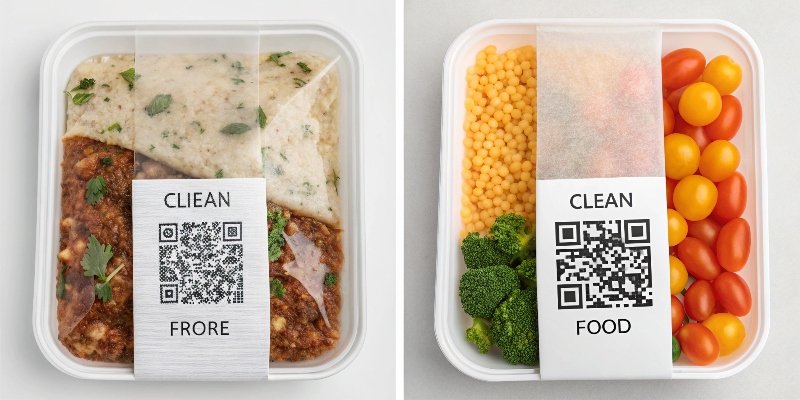
I have talked with many packaging design5ers over the years, and this question always comes up. We are required by law to put so much text on a very small box. Does it actually work? The evidence suggests that a lot of it doesn't.
The Problem of "Information Overload"
Pick up any cereal box or bag of snacks. The back panel is often a wall of text. It has nutrition facts, a long list of ingredients, allergy warnings, and marketing claims. Research shows that the average shopper spends only a few seconds looking at a product on the shelf. They cannot possibly read and process all of that information in such a short time. As a result, important health and safety information gets lost in the noise. The label is compliant with the law, but it's not effective in communicating with the human who buys it.
SmartLabels as the Solution
This is where SmartLabels6 provide an elegant solution. We can use them to create a much cleaner, more attractive, and less intimidating package design. The physical package can focus on the most critical information: the brand name, the product type, and maybe one key benefit. Then, a simple and clear call to action, like "Scan for full nutrition and allergen info," directs them to everything else. This concept is called layered information13. The consumer is in control. They can choose how deep they want to go for details, from a quick look to a deep dive into the supply chain2.
Conclusion
SmartLabels6 are a genuinely smart move for the food industry. They make packaging more transparent, interactive, and helpful, building real trust between brands and consumers while fighting food waste14.
-
Understand the role of the physical tag in ensuring the effectiveness of SmartLabels. ↩ ↩
-
Learn how SmartLabels provide insights into the supply chain, enhancing consumer trust. ↩ ↩
-
Discover the key factors that influence the reliability of SmartLabels in food packaging. ↩
-
Investigate the effectiveness of food warning labels and how SmartLabels can improve them. ↩ ↩
-
Explore best practices in packaging design that enhance communication and consumer engagement. ↩ ↩
-
Explore how SmartLabels enhance food packaging by providing dynamic information and improving consumer trust. ↩ ↩ ↩
-
Learn how personalization in SmartLabels can improve consumer experience and safety. ↩
-
Find out how health apps can work with SmartLabels to provide personalized dietary information. ↩
-
Discover the differences between intelligent and smart packaging and their respective benefits. ↩
-
Learn about the role of QR codes in food packaging and how they enhance consumer engagement. ↩
-
Find out how Time-Temperature Indicators help monitor food safety and freshness. ↩
-
Discover how NFC technology is used in food packaging to provide real-time information to consumers. ↩
-
Explore the concept of layered information and how it improves consumer understanding. ↩
-
Find out how SmartLabels contribute to reducing food waste through better information and transparency. ↩

